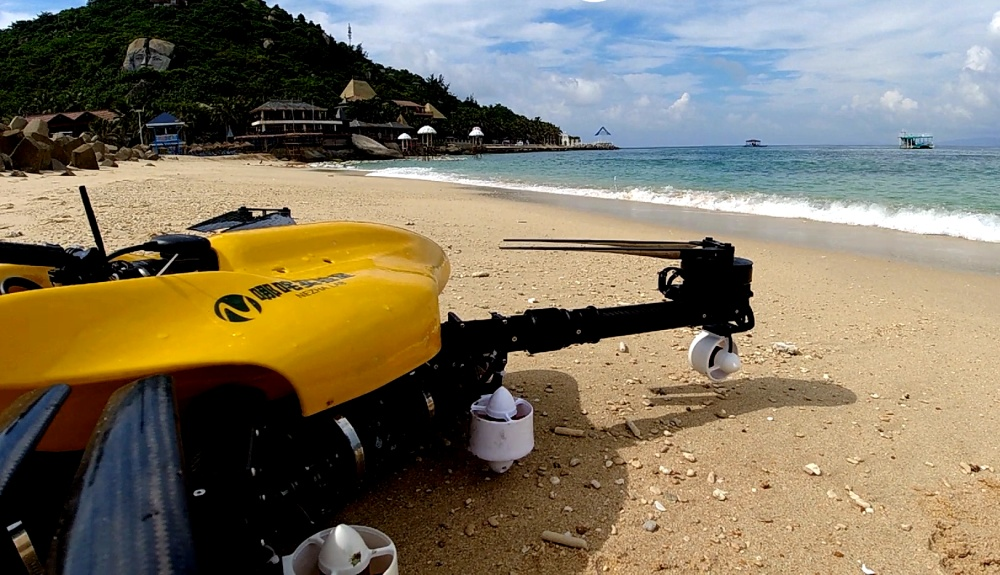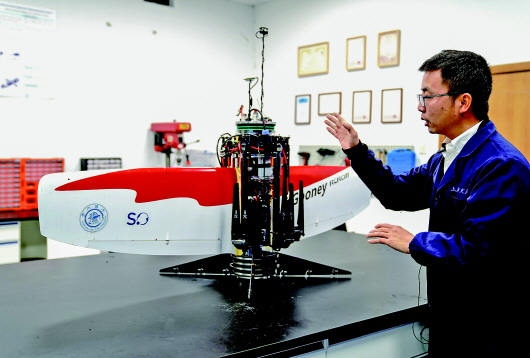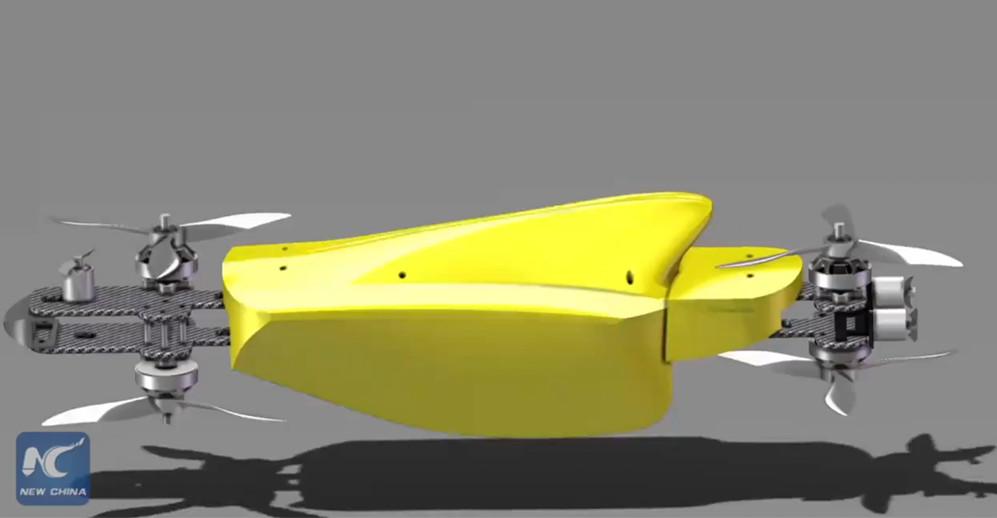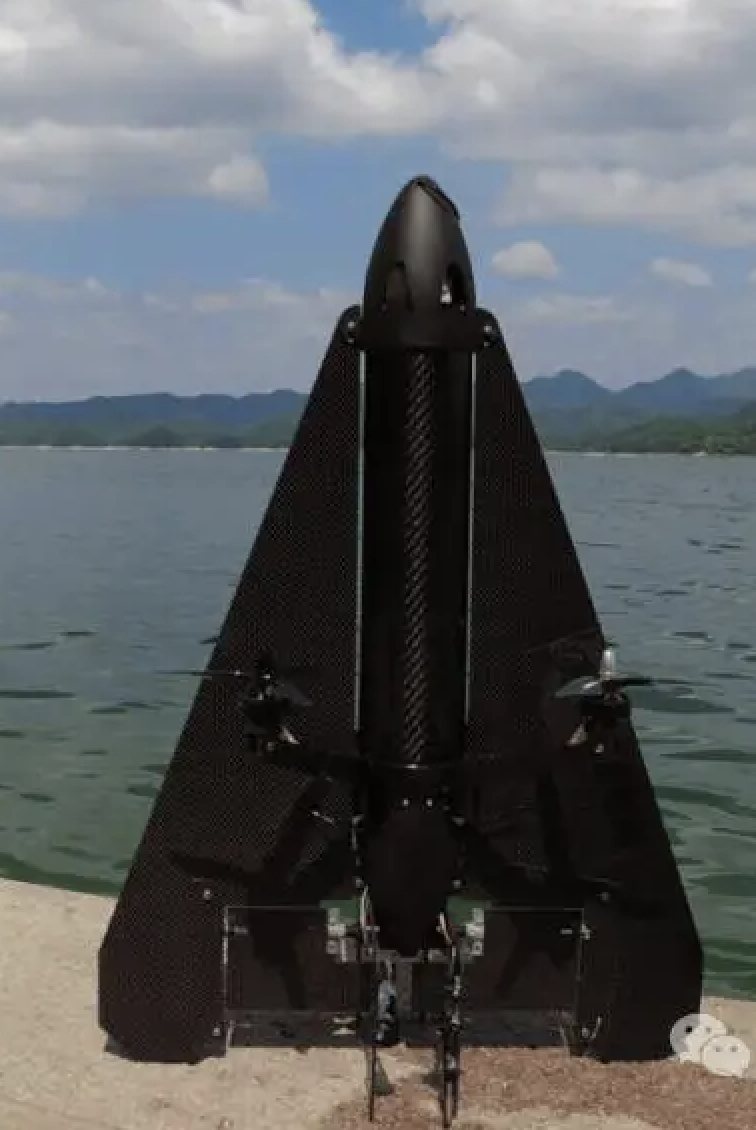Introduction
China Jiaotong University’s Nezha Hybrid Underwater Aerial Vehicle (HUAV) was successfully tested in the hotly contested areas of Pangong Lake near India’s border on April 7. The Nezha HAUV was also tested in the earlier Joint air-sea scientific research missions in the South China Sea. Since the 2020 Galwan Clashes, the number of Chinese drones has exponentially increased in the most tense areas in the Line of Actual Control but this is the first time that a HAUV drone was publicly announced to be tested in the LAC. At a public press conference, Zeng Zheng, representative and scientist of Jiangtong University’s “Nezha Lab” described its Nezha testing in Pangong Tso as the first-ever experimental application of China’s cross-domain drone in high-altitude environments.
The Nezha HAUVs are medium drones with four rotors and can sail 8 meters underwater for 29 hours in a concealed manner. In 2016, the “Nezha Laboratory” was established by the School of Oceanography of Jiaotong University to research and develop a highly maneuverable transport vehicle that travels through air, surface, and underwater. Since then, Jiaotong University has attempted to revolutionize China’s drone research and production by producing and testing a series of HAUVs subsequently from Nezha-F, Nezha-IV, and Nezha-Mini.
Nezha HAUV Series
1. Nezha IV
Nezha IV” weighs 21 kilograms, has a maximum load of 7 kilograms, a designed working depth of 100 meters, and a maximum flight altitude of 200 meters. It adopts a foldable and modular design, with a fully unfolded size of 1.4 meters, and a folded size of 0.96 meters in length and 0.62 meters in width.
2. Nezha
“Nezha” was successfully developed by the marine technology team of the School of Oceanography of Shanghai Jiao Tong University
3. Nezha-F
The Nezha-F, a hybrid aerial underwater vehicle (HAUV), is one of a series, including the larger Nezha IV unveiled in Nov 2023 that has underwater thrusters. When underwater it retracts four propeller arms and goes into submarine mode, using a piston buoyancy adjustment system to vary its depth up to 8m and can stay submerged for 29 hours.
4. Nezha-B
A sleek, bone-shaped vehicle from Shanghai Jiao Tong University’s Nezha Lab. At just 900 grams, this compact marvel glides seamlessly through water and air. Nezha-B. Related results were recently published in the authoritative academic journal “IEEE Robotics and Automation Letters”.
5. Nezha-Sea Arrow
The innovative tail-sitting delta wing configuration of the “Nezha-Sea Arrow” has a total length of 575mm, a wingspan of 400mm, a deadweight of 1.5kg, a designed diving depth of 50 meters, and a designed flight altitude of 1000 meters.
Military Implication
The Nezha HAUV drones and the development of its core technologies were supported by the Qingdao Pilot National Lab for Marine Science and Technology. Recently, the Qingdao lab’s research survey vessels have intruded and conducted maritime research and observation activities near India’s water territory in the Indian Ocean Region (IOR), with a clear indication for military purposes, raising high-security concerns. Reportedly, the same lab has previously collaborated with the People’s Liberation Army on various naval defense projects.
Critics highlight that the drone was mainly built by Shanghai Jiaotong University for civilian purposes. However, regardless of the overt links between the university with the military. The majority of UAVs used by the Chinese defense and security forces near Indian borders are mainly built by civilian companies, according to the Foundation for Strategic Research.
Earlier, the 78092 Unit of PLA revealed plans to develop and unleash their Thetheoritical Hybrid Aerial Underwater Vehicle labeled 007 drone in hypothetical overseas special operations likely along the Yarlung Tsangpo (Brahmaputra) against India and play major roles during hypothetical conflicts in 2035 as detailed in a paper authored and published by the unit in the Fire Control & Command Control Journal. The series of Nezha’s drones and eventual testing in the LAC means that it is the manifestation of the Chinese military plan of developing the “007” Drones” and plans to attack India.
Due to its high mobility and ability to stay underwater for a long time, there is a high tendency for the “Nezha” Drone to be modified for military uses and as an anti-ship, submarine, or boat mine enhancing their water warfare capabilities across the vast water bodies in India-China border areas. Chinese PLA’s border forces such as the 32160 Unit of PLA stationed in Pangong Tso and Spanggur Tso (Lake) and other units stationed proximate to Yarlung Tsangpo Tsangpo will be potentially equipped with the HAUV drones most likely Nezha drones. Other than Anti-ship or boat mines, the “Nezha” drones can support and upgrade PLA’s border surveillance, artillery spotting, loitering grenades, bombs, and suicide drones. Due to its small size and capacity to carry a load of 5 kilograms, its use in logistical support for the border forces is limited but highly effective.
Shanghai Jiao Tong University (SJTU) ties to PLA
Shanghai Jiaotong University under the Ministry of Education, located in Shanghai and revered as the top destination for students with defense and security interests has a clear connection to the Chinese People’s Liberation Army. The university’s ties to the Military in the form of Military-Civilian Fusion (MCF) has culminated in the forms of various joint agreements, operations, and cooperation in the field of research and production of defense technology, defense training, recruitments, joint campaigns and many more.
Although developed by civilians in the University, there is a clear implication of Military Integration of such technology based on recent trends, institutional links, and applications. Multiple reports highlight Jiao Tong University’s critical ties to the PLA as a key defense research center and its alleged collaboration in cyber attacks.
There are high implications that the University is directly working with PLA on numerous operations that reported ties with the PLA Unit 61398, which is a cyber attack group targeting America.
Moreover, the 61398 Unit of PLA and the University had co-published several papers on computer network security and intrusion detection. The School of Information Security Engineering under SJTU is reported to be the lead unit of the High-tech Ship and Deep-Sea Development Equipment Collaborative Innovation Center where it has contributed to assisting the PLA Navy’s transition to offshore defense operations.
Other than operations, SJTU signed a cooperation agreement with the Academy of Military Science in 2014 for conducting cooperative research and has three defense research-related laboratories including materials science, ships, and hydrodynamics, according to the Australian Strategic Policy Institute. In particular, the School of Information Security Engineering has ties to the PLA through its dean and chief professor who both previously worked for the PLA. SJTU came under the supervision of the defense industry agency SASTIND with the State Administration of Science, Technology, and Industry for National Defense on June 30, 2016.
The University also had cooperation projects with China’s biggest defense industries such as CASC and CSIC. As part of the Major MCF move, the University had signed a strategic cooperation agreement with CNNC and planned for the co-construction of the Nuclear Power Vessels and Marine Equipment Research Institute and is involved in key Nuclear Research. Furthermore, It has a long history of training national defense students and has provided a large number of outstanding talents for the military.
Future Implications
There are dangers from China’s Nezha HAUV testing in sensitive areas of Pangong Tso amid the ever-growing tensions and frictions between the two forces since the 2020 Galwan Clashes. Militarily, the makers of this critical HAUV have huge ties to the Chinese People’s Liberation Army and its affiliated institution. Furthermore, the Nezha Drone not only resembles China’s hypothetical military plans to use such drones in future military operations but also precedently these so-called civilian drones have a high probability of being military modified and used for military purposes.
China is no stranger to fostering the integration of game-changing inventions and technological advancements into Border Defense Forces in Tibet’s border areas through the military-civilian fusion development, and the Nezha HAUV in the Pangong Lake (Tso) is the latest such initiation that will give PLA a tactical edge in operating and fighting across multiple domains.
Amidst the increasing trend of civil-military integration of Drones in military operations, China recently introduced a Hybrid Aerial Underwater Vehicle (HAUV) called Nezha in Pangong Tso close to the LAC. In this ever-changing landscape of modern drone warfare, China’s Nezha drone could revolutionize future drone warfare. “Nezha” can play an important role in reconnaissance missions or sabotage missions against Indian forces near water bodies along the LAC.





